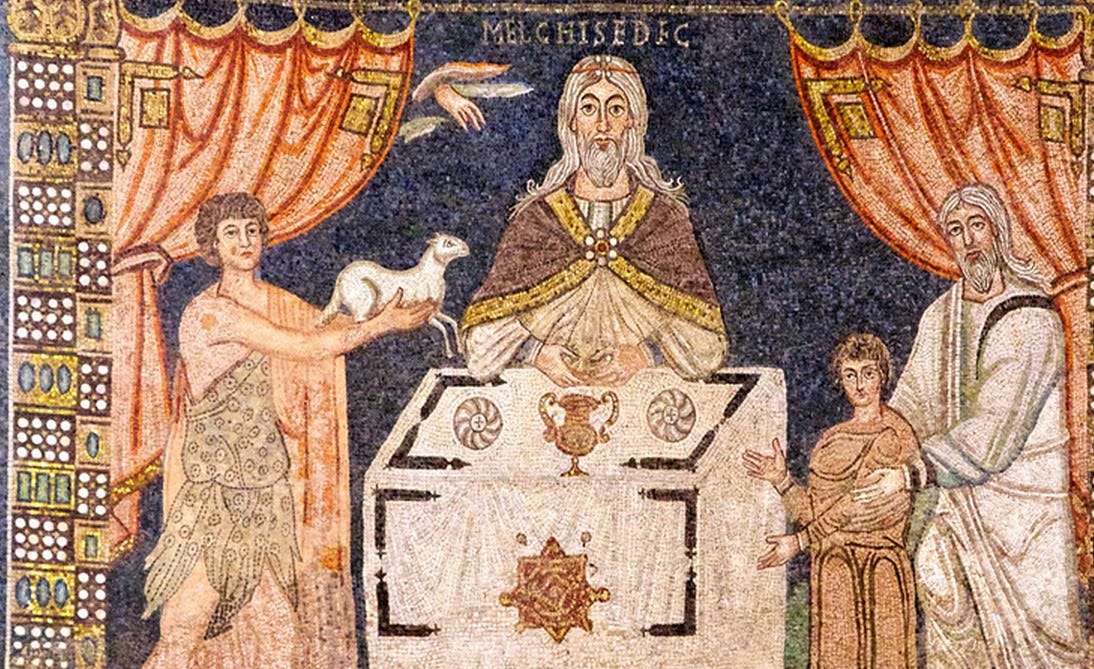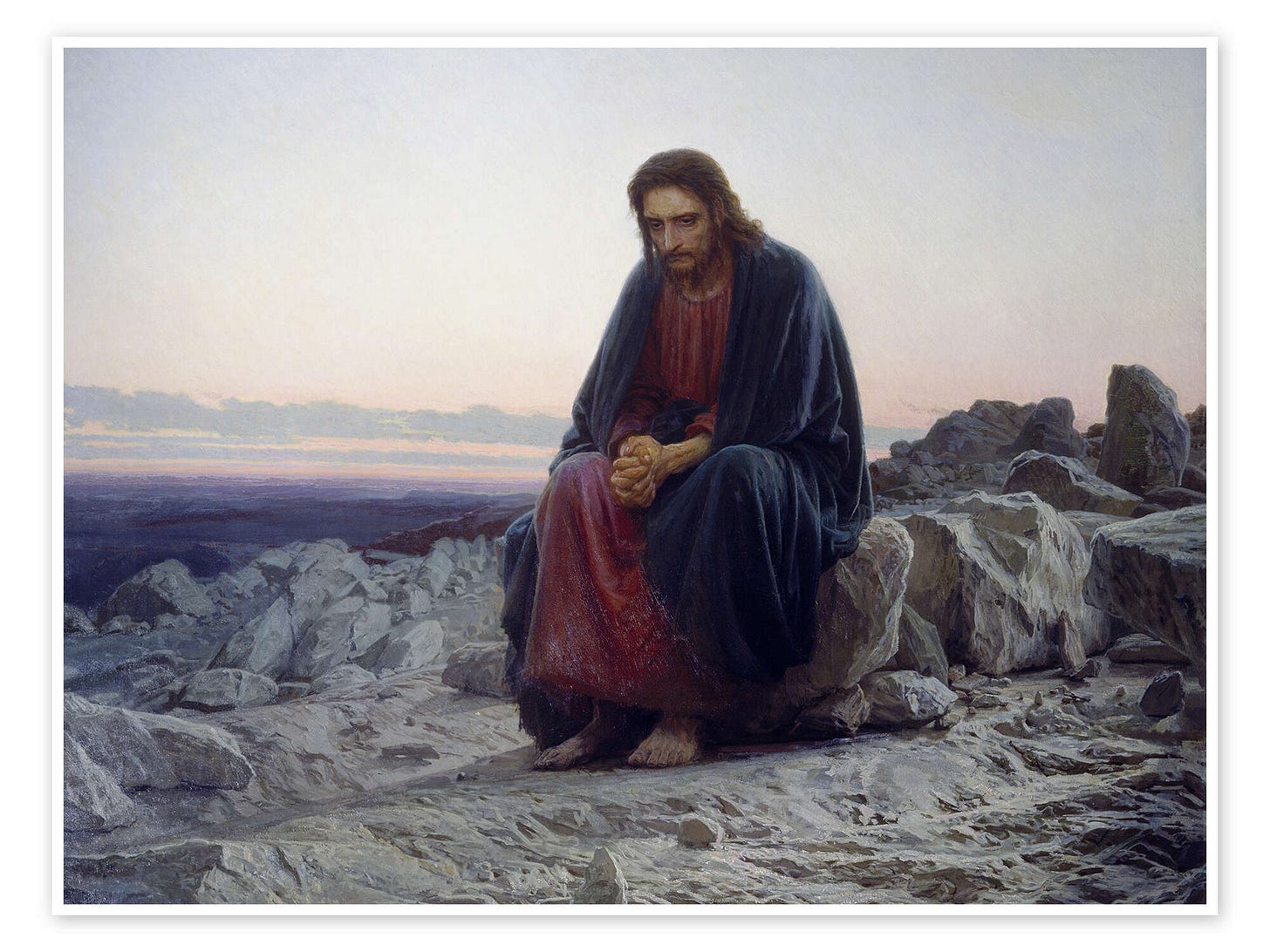Reading the Bible is a big job. Many have told me they’ve struggled to get past Genesis or Exodus, and I don’t blame them. Numbers is a census, and who enjoys those? I don’t recommend trying to read the Bible cover-to-cover like this. For one thing, it’s boring. For another, the documents were never meant to be read that way: the Bible isn’t one book, but a collection of books. Finally, if you are new to the Christian faith or not even yet inducted, many passages in the Bible will not seem terribly relevant.
I have read the entire Bible, but I never read it in order. When someone declares they’ve read it and they hated it, they usually follow up with some grossly misremembered summary from the time they blasted through while quote-mining. Let’s not kid ourselves: It’s a lot of text, from ancient cultures, and you probably aren’t reading in the original languages, either. As with any ancient text, comprehending the Bible takes a lot of scholarly training, or discipleship by someone who has had scholarly training, and even those people study for entire lifetimes. Context is king.
Just Read What Interests You
If a passage is putting you to sleep, you can always read it some other year. Skip to something that grabs your interest.
“What about the canon?” What about the canon. Some texts are excluded from Protestant Bibles because certain church fathers contested them. Those same texts are included in the traditional canon because not all the church fathers contested them. Both traditions are trying to err on the side of caution. Whether the apocrypha is divinely inspired or not, it isn’t very theologically significant; but it is of historical interest. So chill. Neither canon can hurt you.
Don’t worry about the translation, either. Assuming it isn’t a dishonest retelling by a cult like the Watchtower, all translations are more or less equal, with various strengths and weaknesses. There’s no substitute for reading the text in its original language. Just work with whatever translation you can actually comprehend (probably not the King James Version) and ask a qualified person for help with the parts you don’t comprehend.
Here’s my recommended reading for beginners, a 30-day crash course:
Day 1: Read Genesis 1-3
Don’t get hung up trying to make this passage into a science textbook. That isn’t the reason it was written. “Taking the Bible literally” does not mean reading it like a Puritan lawyer with autism; it means trying to understand what the text intends to convey. The Old Testament is simply the written part of the oral Torah (“law” or “teachings”) that Hebrews were expected to memorize. Hence all the repetition: “And God said…,” “and God saw that it was good,” “…and there was evening, and there was morning…” etc.
I can make young earth creationist arguments with the best of them, but it’s really okay if you don’t find that compelling. It isn’t the point of the passage, as you’ll see when we get to Hebrews 11. Even in the 4th century, St. Augustine cautioned against tying our scientific theories to the Bible: “…We should not rush in headlong and so firmly take our stand on one side that, if further progress in the search for truth justly undermines our position, we too fall with it.” Scientific theories come and go.
Day 2: Follow Up with John 1:1-5 and Luke 1:26-38 & 46-55
Notice the parallels between John’s gospel and the opening lines of Genesis. As you read Luke 1, consider why some theologians think of Mary as the Second Eve.

Days 5-9: Read the Old Testament Highlights
Genesis 4:1-16 (Cain and Abel)
Genesis 5:21-24 (Enoch)
Genesis 12:1-9 & 21:1-7 & 22:1-14 (Abraham and Isaac)
Genesis 37-50 (Joseph)
Exodus 1-12 (Moses)
Joshua 2:1-21 (Rahab)
Judges 4 (Deborah)
Judges 6-8 (Gideon)
Judges 13-16 (Samson)
I Samuel 3:1-10 (Samuel)
I Samuel 16:1-13; I Samuel 17; II Samuel 7:1-16; II Samuel 11 (David)
I Kings 18:20-40 and I Kings 19 (Elijah)
II Kings 2:11-15; 4:18-37; and 5:1-19 (Elisha)
Day 10: Interpret the Old Testament with Hebrews 11
Hebrews 11 provides a helpful commentary for interpreting the Old Testament stories above. It tells us that the creation story teaches that the contingent material universe was launched into being by a non-contingent, immaterial force: “The universe was created by the Word of God, so that what is seen was not made out of things that are visible” (verse 3). This chapter also emphasizes that God was not pleased by the actions of the Old Testament “heroes” (many of them were fairly evil men), but that they were declared righteous by their faith in God’s promises.
Day 11: On Noah’s Ark
Want to wrinkle your brain? Contrast Genesis 6:11-9:19 with Matthew 3:13-17 and I Peter 3:20-22. As with the creation story, you may find yourself distracted during the story of Noah’s flood because culture has taught you to frame it as part of a geology debate. Scripture uses it as an analogy for Christ. Just as those who entered the ark (as if it were a coffin) entered into a new covenant with God after the waters washed away evil, those “who have been baptized into Christ Jesus were baptized into his death… in order that, just as Christ was raised from the dead by the glory of the Father, we too might walk in newness of life” (Romans 6).
Day 12: Existentialism
Read Ecclesiastes 1:1-11, 3:1-8, and and Ecclesiastes 12. Life “under the sun” is a naturalist worldview, in which only the material world exists and nothing matters. Life “under heaven” is a theistic worldview, in which there is a time and purpose for everything.
Day 13: The Problem of Evil
Read Job 1 and continue if you like. If the following chapters are too long for you, know that Job’s friends eventually reason that he must have done something to deserve his suffering. Job responds by accusing God of injustice. They argue about this for many chapters until a young man rebukes both sides in Chapters 32-37. Then God Himself speaks from Chapters 38-41. The Book of Job is considered one of the greatest pieces of wisdom literature ever written.
Day 14: The Temptation of Christ
Deuteronomy 6:13, 8:2-3, Psalm 91, and Matthew 4:1-11. According to commentary in the Cambridge Bible, “we discern Him tempted (1) As the Son of Man—the representative of humanity—in whom human nature in its perfection triumphs over sin. An important element in the Atonement. (2) As the second Adam regaining for man what the first Adam lost for man. (3) As the Son of Abraham following the fortunes of his race, tempted in the wilderness as the Hebrews were tempted. A thought present implicitly in our Lord’s answers. (4) As the true Messiah or Christos rejecting the unreal greatness which was the aim of false Messiahs.” You might compare Matthew 4 with Genesis 3. John Milton did in Paradise Lost.
Day 15: The Greatest Commandments
Compare Deuteronomy 6:1-5 with Mark 12:28-34 and Luke 10:27. If you need more to do today, read the Ten Commandments in Exodus 20 and ask yourself which commandments are about loving God alone and which are about loving Him through loving your neighbor.
Day 16: The Upside-Down Kingdom
Compare David’s Psalm 37:11 with Jesus’ famous Sermon on the Mount in Matthew 5. How does God respond to the proud? How does God treat the humble? To whom does the kingdom of heaven belong, and how is this different from earthly kingdoms?
Day 17: The Lord’s Prayer
Continue the Sermon on the Mount in Matthew 6. Consider trying to pray the way Jesus taught His disciples to pray. If you would like to finish the Sermon on the Mount, read chapter 7.
Day 18: Tax Collectors and Prostitutes
Follow up a reading of Hosea 6 with Matthew 9:9-13. Don’t confuse this for a license to chill at the strip club. You are the sinner Jesus visits — if you have the good sense to recognize how serious your sin is. God honors the humble and humbles the proud.
Day 19: Offensive Claims
You will read a quotation from Isaiah 61 while reading Luke 4:16-30. Note what Jesus said to enrage the crowd: when God’s messenger is rejected by His people, unclean peoples receive miracles instead. Again, God honors the humble and humbles the proud.
Day 20: Not the Sign We Expected
Read Jonah 2:2-7. This is Jonah’s song after he was resurrected from his time in the belly of a fish. Next read Matthew 12:38-41. What is Jesus promising to do? See also John 2:18-22.
Day 21: Living Water and Bread from Heaven
Read Isaiah 55:1-2, followed by John 4:1-42. Note that material bread and water do not satisfy the soul, the innermost part of a person, but Jesus offers satisfaction on a profound level. To really blow your mind, read John 6:22 and on. This is also related to Matthew 26:26-29.
Day 22: Crucifixion
Read Matthew 26:57-68 and Matthew 27:31-44. See how many parallels you can find in Psalm 22.
Day 23: Death
Read Isaiah 53 and Luke 23:44-49.
Day 24: Descent
Read I Peter 3:18-20, II Peter 2:4-9 and Jude verse 6. This is a controversial passage. According to many great theologians like St. Thomas Aquinas, the pre-incarnate Jesus (God the Son) preached repentance in and through Noah; those who rejected Noah rejected Christ. According to all the church fathers, Martin Luther, and most modern scholars, this passage is about what Jesus did during the time He was dead. Most likely Jesus was not preaching to dead human beings, but imprisoned evil spirits, declaring His victory over hell.
Day 25: Resurrection
Read Psalm 16 and follow up with John 20.
Day 26: Ascension
Read Matthew 28:16-20 and Acts 1:6-11.
Day 27: The Holy Spirit
Read Acts 2 and I Corinthians 12 & 13. Of all the amazing gifts of God, which is the greatest?
Day 28: Return
Read Revelation 19:11-21.
Day 29: Judgment
Read Matthew 25:31-46 and Revelation 20:10-15. How is this in keeping with the Bible’s themes of pride and humility?
Day 30: A New Heaven and a New Earth
Read Isaiah 66:22-24 and Revelation 21:1-8. Who would find these words comforting, and who would find them disturbing?
Approaches to Interpretation
All Christians believe that the Scriptures are the divinely inspired Word of God. Various Christian traditions disagree on how exactly to interpret the Word of God. This art of interpretation is called hermeneutics.
The trads (Roman Catholics and Eastern Orthodox) consider tradition to be just as authoritative as the Bible. They deny that their traditions have changed over time and hold that everything they do goes back to the Apostles. A.J. Maas explains:
…any meaning of a passage which does not agree with its grammar, its context, and the internal and external conditions of its author, cannot be the true sense of the writer. In the case of Scripture, the fact of its inspiration and of its authentic interpretation by the Church must be added to the three common criteria of interpretation; hence any meaning not in keeping with Scriptural grammar, context, or the concrete conditions of the Biblical writers, or not in harmony with the fact of inspiration and the spirit of the Church’s interpretation, cannot be the true sense of Scripture.
Now, if you ask me, that simply doesn’t seem to be true, but I agree that tradition is very important. The proto-Reformer Jan Hus (c.1370-1415), when he was accused of heresy for political reasons, asked that he be shown in the Bible where he had erred. He was not trying to throw all tradition away, but rather arguing that the Word of God was authoritative over tradition. According to Rev. John Jackman, Hus “clearly looks for logic, reason, and even the actual experience of believers.” Inspired by Jan Hus, some use the Wesleyan Quadrilateral in their hermeneutics:
Scripture is the primary source and standard for beliefs and practices.
Tradition helps us ascertain how the church has historically interpreted Scripture.
Reason beings logical coherence to the Bible and tradition.
Personal experience is last in line for discerning God’s voice.
According to Wesleyans, the Bible is not the only source of divine revelation, but it must be respected above all other revelation. This is called prima scriptura. Critics warn that it is often too individualistic and reductionist a view of Christianity and lacks clear guidance on complex issues, downplaying the role of the Church in shepherding believers.
Martin Luther (1483-1546) suggested sola scriptura, “Scripture alone,” meaning that only the Bible is infallible. He held that “Scripture interprets Scripture.” In Lutheran hermaneutics, issues that aren’t explicitly addressed by the Bible need to be set aside as inconclusive non-essentials. Rigid doctrines must have ample Scriptural support. In the words of Pete Lange,
What we strive to do is allow the context of a given passage to help dictate how we interpret it. We begin with the immediate context of the phrase or sentence, then move to the paragraph, then the chapter, and then the book. Finally, because Christ himself claims all of Scripture as a testimony to himself, we allow the Old Testament to be interpreted in light of the New Testament, and vice versa (Luke 24:44).
Notice that all of the above traditions use quite a bit of scholarly reasoning and study to back up their conclusions. The idea behind sola scriptura was not that the Bible is our only source for believing anything, or even that the Bible renders tradition useless. Lutherans depend heavily on the church fathers and even, sometimes, philosophers. Sola scriptura is supposed to mean that only the Bible has the final authority. Sadly, many low-church Protestants and heretical Bible cults have twisted this position in order to make the Bible support their stances instead of deriving their stances from the Bible. This dishonest approach is called prooftexting.
Don’t prooftext. That’s how you wind up deceiving and embarrassing yourself. Seek guidance. Second-guess your conclusions. Remember how often the Bible praises humility.
Further Study for Beginners
One very clear and simple approach to learning Christian doctrines is to study Luther’s Small Catechism. This was written for children (back when children had way better vocbularies, apparently) and I depend on it often for teaching.
If you’d rather watch videos, you will probably enjoy the Bible Project. I don’t agree with everything taught on this channel, but it’s a pretty amazing undertaking in making the Bible accessible to modern audiences. Additionaly, the “Catholic Mr. Rogers,” Fulton Sheen, had a wholesome TV series called Life is Worth Living.









I think this is a great overview for getting into the word. Trying to follow reading plans, especially timed ones, never worked for me. What did work was recognizing that, like you said, the Bible is a collection of books, and we're not in a race to get through them.
But to anyone who thinks the Bible is boring, I could not more vehemently recommend looking up the books and YouTube seminars of Dr. Michael Heiser, and also binging the Blurry Creatures podcast (starting from when they began interviewing theologians and scholars - you can feel free to skip the first several episodes that focus on Bigfoot and cryptids, unless that's your thing).
Just noticed. There's no Day 3 + 4 specified?